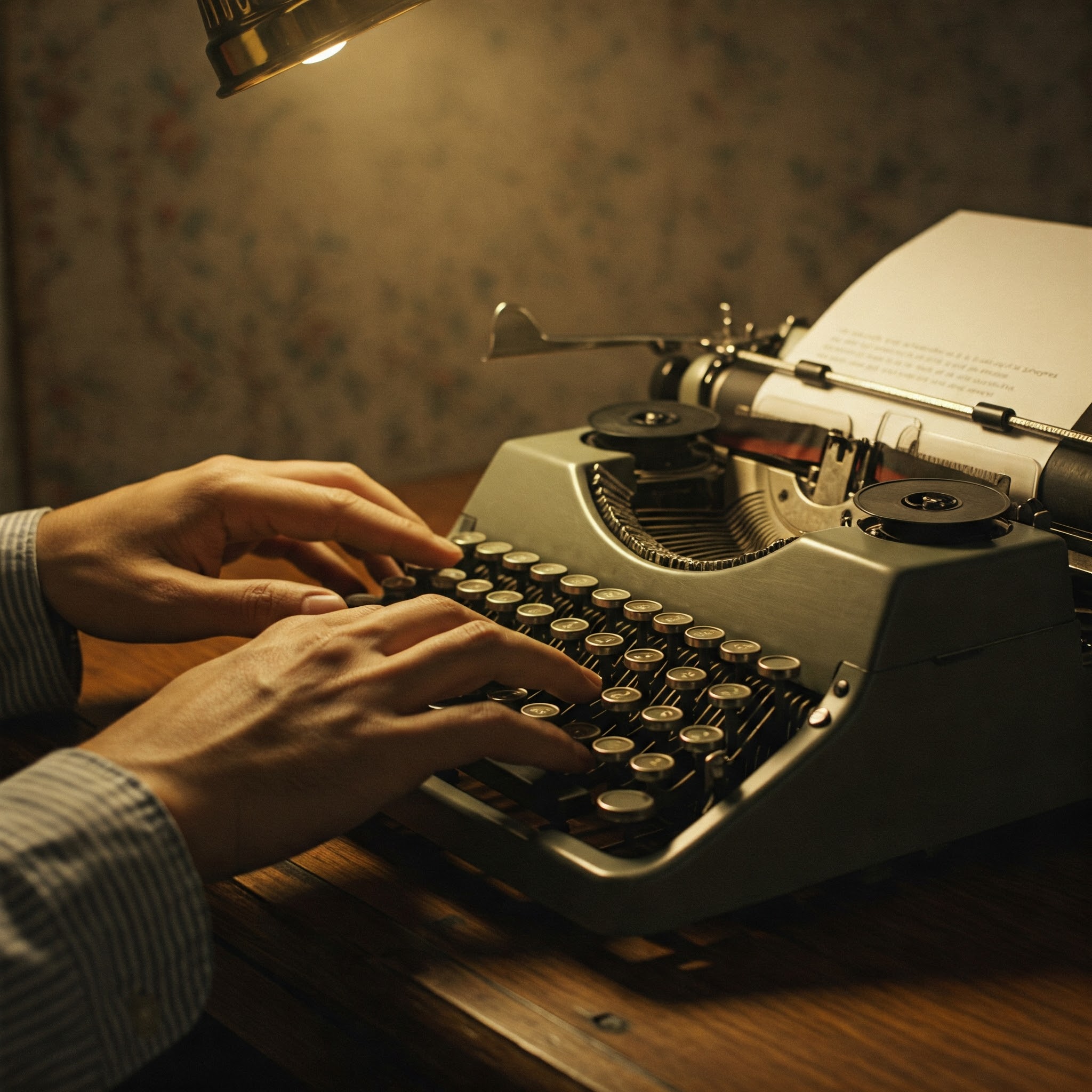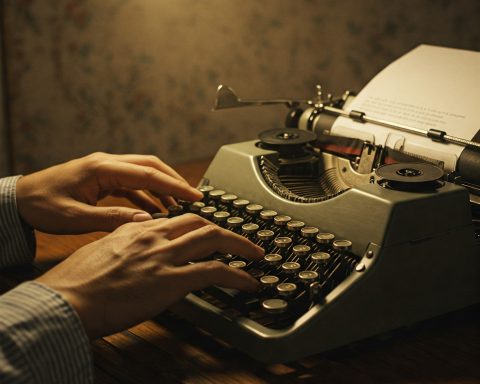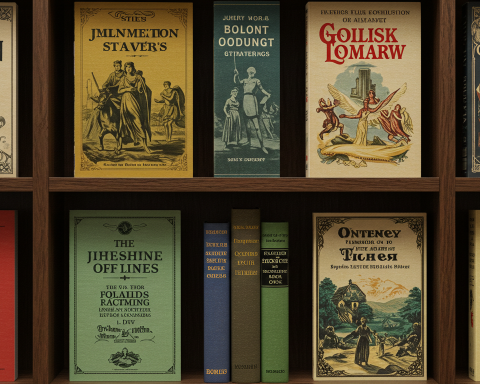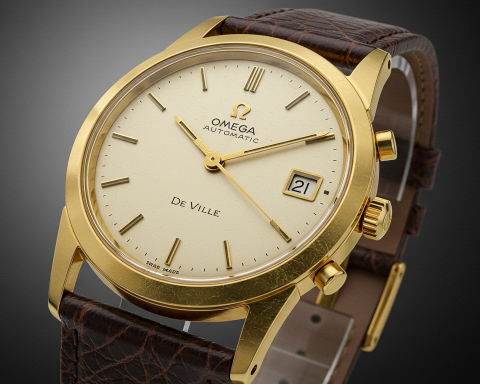Before the silent glow of screens and the soft tap of digital keyboards, there was a mechanical symphony – the rhythmic click-clack of typebars striking ribbon, the satisfying ding at the end of a line, the physical imprint of thought onto paper. This was the era of the typewriter, a machine that did more than just speed up writing; it fundamentally reshaped communication, business, society, and the very act of literary creation. From its nascent sparks in the 18th century to its zenith in the 20th, and its enduring allure in the digital age, the typewriter’s journey is a tale of innovation, social change, and the timeless power of the written word. This report explores that golden age, delving into the typewriter’s historical significance, its iconic models, its intimate relationship with legendary writers, and its surprising second life as a coveted collectible.
The Dawn of Mechanical Writing: Origins and Early Innovations
Early Concepts and the Need for Mechanization
The dream of a machine that could impress letters onto paper with mechanical uniformity predates its successful realization by centuries. As early as 1714, English engineer Henry Mill received a patent from Queen Anne for a “Machine for Transcribing Letters”. Mill envisioned a device capable of producing clear, standardized text, potentially useful for legal documents and preventing forgery, a significant concern when business and legal affairs relied heavily on potentially illegible or easily alterable handwriting. While no known examples of Mill’s machine survive, his patent marks the conceptual beginning. The inefficiency and potential ambiguity of handwriting, especially in the burgeoning worlds of commerce and law where clarity and permanence were paramount, created a latent demand for such an invention. Subsequent inventors across Europe and America experimented with various designs, often complex and impractical, including William Austin Burt’s 1829 “Typewriter” which used dials instead of keys. These early efforts, though not commercially viable, laid the groundwork, fueled by the broader context of the Industrial Revolution’s drive for efficiency and mechanization in all aspects of life.
Sholes, Glidden, Soule, and the Birth of the Practical Typewriter
The breakthrough moment arrived in Milwaukee, Wisconsin, in the late 1860s. Christopher Latham Sholes, a printer and newspaper editor, initially aimed to create a machine for numbering pages or tickets. Inspired by an article in Scientific American about an English inventor’s attempt (John Pratt’s Pterotype) and encouraged by fellow printer Samuel W. Soule and amateur mechanic Carlos S. Glidden, Sholes shifted his focus to creating a practical writing machine. Their initial 1867 prototype, built with the help of clockmaker Matthias Schwalbach, featured a full alphabet and basic punctuation. An early model even resembled a piano with black and white keys. Sholes’s background as a printer likely informed his understanding of type and impression, while the collaborative nature of the invention, involving mechanical expertise and conceptual input, proved crucial. They secured their first patent in 1868 for a machine that, while rudimentary, demonstrated the core concept. Seeking funding, they attracted James Densmore, an oilman who provided crucial financial backing and became the driving force behind the machine’s relentless refinement, even as Soule and Glidden’s interest waned.
Remington Steps In: Commercialization and the QWERTY Standard
Despite years of development and numerous prototypes, Sholes and Densmore struggled to manufacture the typewriter profitably. The machines were complex, handmade, and faced skepticism from potential investors who deemed typewritten letters impersonal. Densmore, however, persisted and eventually approached E. Remington and Sons, a company known for manufacturing firearms and sewing machines, which was seeking to diversify its production after the American Civil War. Recognizing the potential, Remington contracted to manufacture the machine in March 1873.
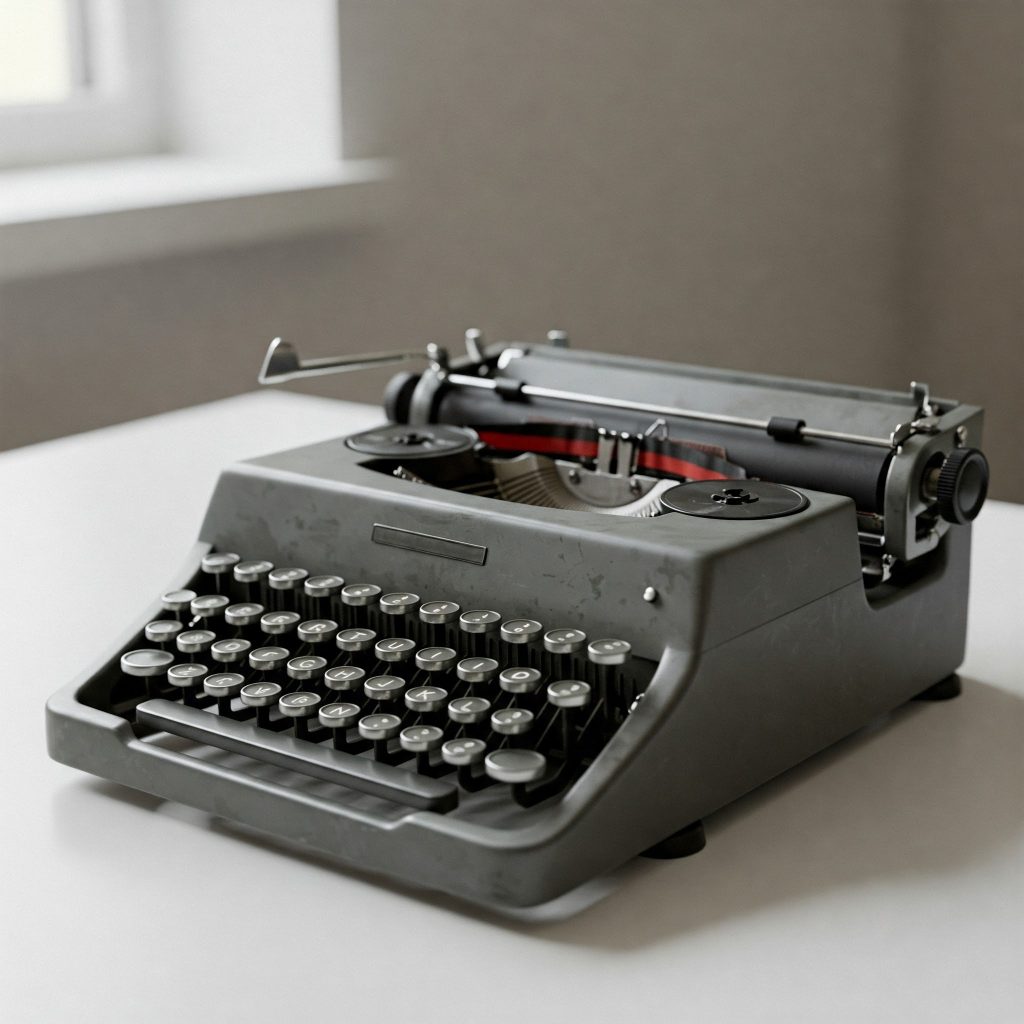
Remington’s engineers further refined the design, making it sturdier and more reliable, before beginning production. Marketed as the “Sholes and Glidden Type-Writer,” the first commercial model rolled out on July 1, 1874. Early models inherited aesthetic elements from sewing machines, sometimes even featuring a foot treadle for carriage return, reflecting their shared manufacturing origin. A critical development during this period was the finalization of the QWERTY keyboard layout, patented by Sholes in 1878. While often mythologized as designed solely to slow typists and prevent typebar jams in the sluggish early mechanisms, the reality is likely more complex. Regardless of the precise intent, the QWERTY layout became inextricably linked with the Remington’s success. As Remington typewriters gained traction, the QWERTY layout became the de facto standard, a classic example of path dependency where an early technological choice, reinforced by user training (like the rise of touch-typing specifically for QWERTY) and market dominance, becomes locked in, resisting potentially more efficient alternatives like the later Dvorak layout.2 The Remington No. 1, though initially slow to sell due to its high cost ($125) and lingering reliability issues, marked the true beginning of the typewriter age.
The Typewriter Takes Hold: Revolutionizing Society and Business
Transforming the Office: Speed, Legibility, and Efficiency
The arrival of commercially viable typewriters like the Remington triggered a profound transformation in the business world. Initially met with some reluctance , the machine’s advantages quickly became undeniable. Its ability to produce legible, standardized text at a speed far exceeding handwriting was revolutionary. An 1888 account estimated that a single typewriter operator could accomplish the work of half a dozen clerks using pens, saving significant time – perhaps 40 minutes per hour. This dramatic increase in productivity was a powerful driver of adoption. Businesses could now handle correspondence, record-keeping, and document preparation with unprecedented efficiency, leading to increased profits and facilitating growth alongside expanding industrial production and transportation networks. The clear, uniform output also reduced errors and misunderstandings caused by illegible handwriting, crucial for contracts and official records. The typewriter became an essential tool, accelerating the pace of business and fostering the application of “scientific management” principles to office work. The sheer speed and efficiency aligned perfectly with America’s burgeoning “mania that nothing is worth doing unless done quickly”.
The Rise of the Typist: Women Enter the Workforce
One of the most significant social impacts of the typewriter was its role in opening doors for women in the professional workplace. Remington, when marketing its machines, explicitly targeted women for the role of typist, often assuming they would transcribe dictation. Early machines even featured floral ornamentation, perhaps reflecting prevailing notions of femininity. Typing quickly became one of the few respectable and relatively well-paying professions available to women outside the domestic sphere or teaching. The number of female stenographers and typists surged dramatically – a 305% increase between 1890 and 1900 in the US. By 1900, the vast majority (nearly 95%) of stenographers and typists were unmarried women.
This influx represented a major societal shift, granting women new economic independence and visibility in the public sphere. New businesses, like restaurants catering to working women, emerged. However, this opportunity was not without its complexities. The role of the typist, while empowering for some, also became associated with gendered expectations and stereotypes. The image of the female typist became a fixture in popular culture, sometimes depicted in ways that reinforced power imbalances or became fodder for clichés about office dynamics and sexual advances. Despite these limitations, the typewriter undeniably served as a crucial foothold, facilitating the entry of large numbers of women into the business world and contributing to the evolving concept of the “New Woman”.
Impact on Communication and Standardization
Beyond speed and workforce changes, the typewriter standardized communication itself. Handwritten correspondence varied wildly in legibility and style, but the typewriter produced uniform, easily readable text. This standardization facilitated clearer communication within and between businesses, reducing ambiguity and enhancing professionalism. The consistent format also aided in the creation and management of records and archives.1 Furthermore, the typewriter influenced literacy and language. Some educators noted improvements in grammar among students using typewriters. The machine imposed a certain discipline – the fixed characters, the controlled spacing – which encouraged clarity and conciseness. It became an agent regulating literacy, shaping not just how text was produced, but how it was presented and consumed, contributing to a more uniform textual culture essential for capitalist America. This standardization, originating from the machine’s mechanical nature, laid the groundwork for the document formatting conventions we still use today, even in the digital realm.
Icons of an Era: Notable Typewriter Models and Their Evolution
The success of the early Remington spurred intense competition and innovation, leading to a “golden age” of typewriter design throughout the late 19th and 20th centuries. Numerous manufacturers emerged, each contributing to the machine’s evolution.
Remington: From No. 1 to Portables
Having pioneered the first commercially successful typewriter, Remington continued to innovate. The initial Sholes & Glidden (Remington No. 1) could only type in uppercase and was a “blind writer,” meaning the typist couldn’t see the text as it was typed because the typebars struck the underside of the platen. The Remington No. 2, introduced in 1878, addressed a major limitation by incorporating the first shift-key mechanism, allowing for both uppercase and lowercase letters from the same keys. This innovation significantly enhanced the machine’s practicality and became a standard feature. Remington also entered the burgeoning portable market, producing models like the Remington Portable series (including the No. 2 used by Agatha Christie and the Home Portable used by George Orwell) which offered writers mobility. Remington remained a dominant force, adapting through the eras of manual, electric, and portable machines.
Underwood: The Visible Writing Standard (No. 5)
The Underwood Typewriter Company emerged as a major competitor, forever changing the industry standard. The company’s origins trace back to John T. Underwood, whose family business supplied ribbons and carbon paper to Remington. When Remington decided to produce its own supplies, Underwood pivoted to manufacturing typewriters, acquiring the innovative design of German-American inventor Franz Xaver Wagner. Wagner’s key innovation, embodied in the Underwood No. 1 (1896), was a reliable “front-strike” mechanism. Unlike the “understroke” or “blind” writers where typebars hit the bottom of the platen, Wagner’s design had the typebars strike the front of the platen, making the typed text immediately visible to the operator.
This “visible writing” was a monumental improvement in usability. The Underwood No. 5, launched around 1900, perfected this design with a four-bank QWERTY keyboard, shift keys, and robust mechanics. It was hailed as the “first truly modern typewriter”. Its immense success was staggering; by the early 1920s, sales of the No. 5 reportedly equaled those of all other typewriter manufacturers combined. The Underwood No. 5 became the quintessential office machine for decades, its design influencing virtually all subsequent manual typewriters until the electric era. Its dominance cemented the front-strike, visible writing design as the industry standard.
Smith Corona: Portability and Popularity
The company eventually known as Smith Corona rose to prominence, particularly in the portable typewriter market. Formed through mergers involving the L.C. Smith & Bros. Typewriter Company and the Corona Typewriter Company, it became synonymous with reliable, user-friendly portable machines. Models like the Corona 3 (a folding portable popular in the 1920s and 30s, used by Hemingway and possibly Christie) and later series like the Silent, Super, Sterling, Clipper, and Galaxie were ubiquitous in homes, schools, and offices. Smith Corona often emphasized durability and ease of use, though some later models from the 1960s onwards saw a decline in quality due to increased use of plastic parts. They were also pioneers in electric portables, introducing the 5TE model in 1957. Their machines were widely available, often sold through department stores like Sears (sometimes under the “Tower” brand). While perhaps not always possessing the high-end engineering of some European brands, Smith Corona made typewriting accessible and portable for millions.
Olivetti: Italian Design and Innovation (Lettera 22/32)
Olivetti stood out for its unique combination of technological quality and exceptional design aesthetics. Founded by Camillo Olivetti, the company embraced a philosophy that design, color, and form were as important as the underlying mechanics. Under the leadership of his son Adriano, Olivetti collaborated with renowned architects and designers like Marcello Nizzoli, Ettore Sottsass, and Mario Bellini to create typewriters that were both functional and stylish. The Olivetti MP1 ICO, introduced in 1932, marked their successful entry into the portable market.
Perhaps their most iconic portable was the Lettera 22 (designed by Nizzoli, 1949/1950). Lightweight, reliable, and visually appealing with its sleek lines and innovative basket shift mechanism (lighter than carriage shift), it became a massive success in the 1950s and a favorite of writers like Leonard Cohen and possibly Ansel Adams and Paul Auster. Later models like the Lettera 32 (popular with writers like Martin Amis and Cormac McCarthy) and the Valentine (a pop-culture icon designed by Sottsass) continued Olivetti’s legacy of blending form and function. Olivetti demonstrated that industrial objects could also be objects of beauty and cultural significance. Their eventual acquisition of Underwood in 1963 marked a major consolidation in the industry.
Other Notable Brands (Olympia, Royal, Hammond, etc.)
Beyond these giants, numerous other manufacturers contributed to the rich tapestry of typewriter history. German brands like Olympia were renowned for their robust engineering, durability, and excellent typing feel; models like the SM series (SM2, SM3, SM4, SM8, SM9) are highly regarded by collectors and writers (Woody Allen and Paul Auster used SM models) for their reliability. Royal, another American powerhouse, produced popular office standards (like the Royal 10 used by Hemingway) and widely used portables (like the Arrow, P model, and Quiet Deluxe, also favored by Hemingway) known for their durability and style. The Hammond typewriter, dating back to the 1880s, was unique for its curved keyboard and interchangeable type shuttles, offering superior print quality for its time. Swiss-made Hermes portables, like the Baby and the 3000 (used by Sylvia Plath and Jack Kerouac), were prized for their precision engineering and compact design. Brands like Adler, Facit, Imperial, Erika, and IBM (with its revolutionary Selectric) also played significant roles, each adding their own innovations and designs to the typewriter’s evolution.
The Writer’s Companion: Literary Giants and Their Machines
The typewriter became inextricably linked with the image of the 20th-century writer. For many literary giants, it was more than a tool; it was a partner in creation, its mechanical rhythm pacing their thoughts, its keys capturing fleeting inspiration.
Ernest Hemingway: A Prolific Partnership (Royal, Underwood, Corona, Halda)
Ernest Hemingway’s relationship with typewriters was pragmatic and prolific. He wasn’t devoted to a single machine but used various models throughout his career, seemingly choosing whatever was functional and available. Among the typewriters associated with him are a Corona No. 3 (possibly a gift from his first wife), an Underwood Noiseless Portable, various Royal portables (including the Quiet Deluxe, Arrow, and P model – one of which is displayed at his Key West home), and later, a Swedish Halda portable. He seems to have favored portable machines, likely due to his extensive travels and adventurous lifestyle.
Hemingway’s writing process was disciplined. He famously wrote standing up, using a bookshelf as a makeshift desk with his typewriter placed chest-high. He often started drafts in pencil on onionskin paper before shifting to the typewriter when the writing flowed well, meticulously tracking his daily word count. His famous quote, “There is nothing to writing. All you do is sit down at a typewriter and bleed,” speaks to the intense effort he poured into his craft, channeled through the machine. While the specific typewriter model might not have mattered deeply to him compared to the act of writing itself , the machine was the essential conduit for his famously terse, direct prose style, hammering out classics like A Farewell to Arms and The Sun Also Rises. The typewriter was the engine that powered his disciplined, early-morning writing sessions, enabling the prolific output that defined his career.
George Orwell: Dystopia Typed on a Decrepit Remington (Home Portable)
George Orwell, the author of searing political critiques like Animal Farm and Nineteen Eighty-Four, used a Remington Home Portable typewriter. This specific model, likely produced between 1933-1939 and assembled in London, was notably compact.29 The context in which he used this machine to write his masterpiece, Nineteen Eighty-Four, is particularly poignant. Seriously ill with pulmonary tuberculosis, Orwell worked in relative isolation on the remote Scottish island of Jura. His typewriter during this period is described as “battered” and “decrepit”. Often working in bed, chain-smoking and fueled by coffee, he painstakingly typed the manuscript himself, undertaking significant revisions and retyping entire chapters on this aging machine.
There exists a striking contrast between the physical decay of both the author and his tool, and the monumental, enduring power of the ideas he produced. The frail, failing machine became the vessel for one of the most influential novels of the 20th century, a stark warning against totalitarianism and the manipulation of language. This aligns perfectly with Orwell’s passionate advocacy for linguistic clarity, famously outlined in his essay “Politics and the English Language,” where he urged writers to use simple, direct prose and avoid jargon or obfuscation. His own writing, hammered out on that humble Remington, exemplified this principle. In a curious postscript, anecdote suggests that after Orwell’s death, his widow Sonia gave this very typewriter to the radical 1960s underground newspaper, International Times.
Agatha Christie: Plotting Mysteries on Her Portable (Remington, Corona?)
Agatha Christie, the undisputed Queen of Crime, had a practical relationship with her typewriters. Models frequently associated with her include the Remington Portable No. 2 and later, perhaps a Remington Victor T (a British version of the Model 5 portable). Given her extensive travels, particularly journeys that inspired books like Murder on the Orient Express and Death on the Nile, it’s highly likely she also used a compact portable like the Corona 3. Later in her long career, she might have used machines like the Underwood Standard or an Olympia SM.
Christie’s writing process was methodical. She famously spent considerable time working out intricate plots, characters, clues, and red herrings in numerous notebooks before committing the story to a full draft. While she often wrote initial drafts by hand , the typewriter played a crucial role in the later stages. She found the physical act of typing helped enforce discipline and “economy of wording,” which she considered essential for detective stories. When a broken wrist forced her to use a Dictaphone and a secretary, she missed the focusing effect and control that typing or handwriting provided. For Christie, the typewriter wasn’t primarily a tool for brainstorming or initial creation – that happened in her notebooks and her mind. Rather, it was the instrument for refining those complex ideas, ensuring clarity, precision, and the tight pacing necessary for her mysteries. She didn’t require a dedicated writing space, famously working anywhere from the kitchen table to an armchair, needing only a steady surface and her typewriter.
Echoes of Other Authors
The typewriter’s keys echoed with the stories of countless other writers. Mark Twain stands out as a very early adopter, famously (though perhaps apocryphally regarding Tom Sawyer) submitting one of the first typewritten manuscripts (Life on the Mississippi) to a publisher, using an early Remington. His adoption signaled a shift towards efficiency in literary production. In stark contrast, poet E. E. Cummings embraced the typewriter not just for efficiency but as an artistic medium itself, exploiting its fixed spacing and unique characters to create visually experimental “typewriter poems” where form was integral to meaning. The list is vast and varied: Jack Kerouac typed On the Road on a continuous scroll fed through his Underwood portable ; Sylvia Plath composed intense poetry and prose on her Hermes 3000 ; J.D. Salinger favored a Royal Standard. From William Faulkner’s Underwood Standard Portable to Isaac Asimov’s IBM Selectric, the specific machine often reflected the writer’s era, needs, and perhaps even personality. This diversity underscores that the typewriter wasn’t a monolithic influence; it was a versatile tool adapted by different writers for different purposes – efficiency, artistry, refinement, or simply getting the words down.
The Silent Keys: Transition to the Digital Age
The Rise of the Processor and the Fall of the Typewriter
The reign of the typewriter, dominant for nearly a century, began to wane in the latter half of the 20th century with the advent of computers. The transition was gradual but inexorable. Early computers relied on cumbersome input methods like teletype or punch cards. However, the development of Video Display Terminals (VDTs) in the 1960s and 70s was a turning point. VDTs allowed users to see and, crucially, edit text on a screen before committing it to print. This fundamentally separated the act of text creation from the physical act of printing, offering unprecedented flexibility.
Word processing software emerged, harnessing the power of computers to manipulate text in ways impossible on a typewriter – easy deletion, insertion, cut-and-paste, formatting changes, spell-checking. Simultaneously, personal computers became increasingly powerful and affordable. While sophisticated electric typewriters like the IBM Selectric, with its correcting features and interchangeable typeballs, remained relevant for a time and coexisted with early computers , the advantages of digital word processing eventually became overwhelming for most users. The typewriter’s inability to easily revise text and its fixed output seemed increasingly archaic. Major manufacturers like Underwood (by then part of Olivetti) saw their traditional markets evaporate, eventually ceasing large-scale production. The click-clack symphony faded from most offices and homes, replaced by the quiet hum of processors and the soft tapping of keyboards.
An Enduring Imprint: The Typewriter’s Lasting Legacy
Though functionally obsolete for mainstream use, the typewriter left an indelible mark. Its most visible legacy is the QWERTY keyboard layout, designed in the 1870s for early Remingtons and still the standard on virtually all English-language physical and digital keyboards today. Beyond the physical layout, the principles of efficient document production, standardized formatting, and the importance of clarity and legibility, all honed during the typewriter era, continue to inform our digital writing practices.
Culturally, the typewriter retains potent symbolism. It evokes a specific historical period – the bustling newsrooms, the efficient offices, the solitary writer hunched over keys. It represents a perceived authenticity, a tangible connection to the act of writing, and a focus free from digital distractions. This enduring fascination fuels a vibrant collector’s market and a niche resurgence among those seeking a different kind of writing experience. The typewriter persists not just as a historical artifact, but as a cultural icon, representing craftsmanship, focus, and a rejection of digital ephemerality in favor of tangible creation.
Mechanical Treasures: The Allure of Antique Typewriters
The Renaissance of Retro Tech: Why Collect?
In an age dominated by sleek, transient digital devices, the antique typewriter holds a peculiar and growing fascination. Their resurgence as collectibles stems from a confluence of factors. For many, it’s pure nostalgia, a connection to a past era or perhaps memories of parents or grandparents using such machines. The aesthetic appeal is undeniable; early typewriters, particularly, were often objects of intricate design, with gleaming chrome, ornate decals, and unique forms (like the Oliver’s “batwings” or the Hammond’s curved wooden frame) that make them functional sculptures.
Beyond looks, there’s an appreciation for the mechanical ingenuity and craftsmanship involved – the complex system of levers, gears, and springs working in concert. For writers and enthusiasts, the tactile experience is paramount: the distinct feel of the keys, the satisfying thwack of the typebar, the physical creation of words on paper offer a grounding, deliberate alternative to the frictionless digital world. This desire for a focused, distraction-free writing tool, coupled with historical interest and design appreciation, drives the modern collector’s market. It’s a pursuit fueled less by practical need and more by a desire for tangible connection, aesthetic pleasure, and historical resonance.
Valuing the Vintage: Key Factors
Determining the monetary worth of an antique typewriter is complex, influenced by a variety of interacting factors. While common, later models might fetch only modest sums, rare and desirable machines can command thousands of dollars. Key considerations include:
- Brand and Model: Certain names carry more weight. Early Remington and Underwood models are historically significant. Oliver, with its unique design, is highly collectible. Royal, Smith Corona, and Hammond also have dedicated followings. European brands like Olympia and Hermes are often prized for their engineering. Iconic models (e.g., Underwood No. 5, Olivetti Lettera 22) are generally more desirable than lesser-known ones.
- Age and Rarity: Generally, the older the typewriter, the more valuable it is, especially pre-1920s machines. Nineteenth-century models are particularly rare and sought-after. Common mid-century portables (1940s-60s) are plentiful and thus less valuable unless in exceptional condition or possessing unique features. Rarity isn’t solely tied to age; limited production runs or unusual variations can increase value even for newer machines.
- Condition: This is arguably the most critical factor. Value depends heavily on both mechanical condition (does it type smoothly? are all parts functional?) and cosmetic condition (paint quality, rust, intact decals, missing parts). A machine in mint, fully working order will command exponentially more than the same model in poor, non-functional condition. Whether a machine is sold “as-is” or has been professionally cleaned and serviced significantly impacts its price.
- Unique Features and Design: Unusual mechanisms (e.g., index typewriters, early innovations), distinctive aesthetics (unique colors, Art Deco styling), special or non-standard fonts, or limited-edition releases increase desirability and value.
- Provenance/Historical Significance: A documented connection to a famous owner (a noted author, celebrity, or historical figure) can elevate a typewriter’s value dramatically, turning it into a significant historical artifact.
- Origin: Sometimes, typewriters manufactured outside the country where they are being sold can command higher prices, particularly less common imports or those with foreign-language keyboards (QWERTZ, AZERTY, Cyrillic, Hebrew, etc.).
- Portability: Currently, portable typewriters are often more sought-after than large, heavy desktop models due to ease of storage, shipping, and potential use. The presence of the original carrying case almost always adds value.
The market reflects these factors, creating a wide spectrum. While exceptional pieces fetch high prices, the vast majority of typewriters encountered (especially common mid-century portables) might be worth relatively little ($50-$150), often less than the cost of a professional tune-up. Seller knowledge, platform, and whether the machine is serviced play huge roles in determining the final price.
Guide to Antique Typewriter Valuation Factors
| Factor | Description | Example(s) |
| Brand/Model | Certain manufacturers and specific iconic models are more historically significant or desirable to collectors. | Early Remington/Underwood, Oliver (batwing), Olivetti Lettera 22, Olympia SM series |
| Age/Rarity | Older machines (esp. pre-1920s) and models with limited production runs are generally more valuable. | 19th-century models fetch high prices; common 1950s portables less so |
| Condition | Crucial factor encompassing both mechanical functionality (working order) and cosmetic appearance (paint, rust, completeness). | Mint condition commands premium; broken/rusty machines worth significantly less |
| Features/Design | Unique mechanisms, unusual aesthetics, special colors, limited editions, or non-standard fonts increase value. | Hammond curved keyboard, typewriters with special fonts, unusual colors |
| Provenance | Documented ownership by a famous person (author, celebrity, historical figure) dramatically increases value. | A typewriter used by Hemingway or Christie would have significant premium |
| Origin | Typewriters sold outside their country of origin, especially less common imports or those with foreign keyboards, can be more valuable. | German QWERTZ keyboard in the US; US-made typewriter in Europe |
| Portability (Current) | Portable models are often preferred over heavy desktops; the presence of the original carrying case adds value. | Portables easier to ship/store; case completeness valued 66 |
| Servicing Status | A professionally cleaned, serviced, and fully functional machine commands a higher price than an “as-is” machine needing work. | “Serviced” justifies higher price vs. “needs TLC” |
Hunting Grounds: Navigating the Collector’s Market
Finding antique typewriters involves searching across various platforms. Online marketplaces like eBay and Etsy offer the widest selection but often feature inflated prices and require careful assessment of condition from photos. Facebook Marketplace or local classifieds can yield finds but have limited reach. Auction houses may handle particularly rare or historically significant machines. Offline, antique stores, flea markets, thrift shops, and estate or tag sales can be sources of hidden gems, sometimes at very low prices, but require patience and luck.
Navigating this market requires diligence. Prospective buyers should research the specific model and approximate age using online resources like The Typewriter Database (typewriterdatabase.com), which uses serial numbers for identification. Assessing condition honestly is crucial, especially when buying online – ask sellers specific questions about functionality. Remember that “working” can mean different things; a machine might type but still require significant servicing for smooth operation. Factor in the potential cost of repairs or professional servicing, which can easily exceed the purchase price of an unserviced machine. For potentially very valuable items, seeking a professional appraisal might be worthwhile. Sellers, conversely, should provide clear photos, detailed descriptions of condition (both cosmetic and functional), and understand that unrealistic pricing based on inflated online listings may deter buyers. Proper packing is absolutely essential when shipping, as typewriters are heavy and delicate, easily damaged in transit if not secured correctly. Caution is advised, as the market contains both treasures and overpriced, potentially problematic machines.
Conclusion: From Innovation to Icon: The Typewriter’s Timeless Journey
The typewriter’s story is one of remarkable transformation. It began as a novel solution to the inefficiencies of handwriting, a mechanical marvel born from ingenuity and industrial ambition. In its golden age, it revolutionized the speed and nature of business, opened new avenues for women in the workforce, and became an indispensable tool for shaping modern communication and literature. Iconic models from Remington, Underwood, Smith Corona, Olivetti, and others marked milestones in design and functionality, becoming ubiquitous fixtures in offices and homes. For generations of writers, from Hemingway and Orwell to Christie and countless others, the typewriter was a confidante, its rhythmic cadence the soundtrack to literary creation.
Though eventually superseded by the silent efficiency of digital technology , the typewriter’s influence persists. Its QWERTY keyboard remains our primary interface with the written word , and its legacy echoes in our document standards. Today, the typewriter enjoys a second life, not just as a historical artifact but as a cherished collectible and a symbol of a more tangible, focused era. Its enduring appeal speaks to an appreciation for craftsmanship, a nostalgia for the mechanical, and the timeless allure of putting words to paper, one satisfying click-clack at a time. The typewriter’s journey from groundbreaking innovation to cultural icon is complete, its place in history secured.
References
- Mill Patents the Typewriter | EBSCO Research Starters https://www.ebsco.com/research-starters/history/mill-patents-typewriter
- Working Paper No. 74, Some Influential Effects of the … – PDXScholar https://pdxscholar.library.pdx.edu/cgi/viewcontent.cgi?article=1076&context=econ_workingpapers
- Typing Through Time: Keyboard History – Das Keyboard Mechanical Keyboard Blog https://www.daskeyboard.com/blog/typing-through-time-the-history-of-the-keyboard/
- Production on the Sholes and Glidden Type-Writer Began – This Month in Business History https://guides.loc.gov/this-month-in-business-history/march/typewriter-production-began
- The Evolution of Typewriters: From Classic to Modern Keyboards – 7KEYS https://7keysworld.com/the-invention-and-origin-of-the-typewriter-a-mechanical-eras-text-revolution/
- From quills to typewriters | Europeana https://www.europeana.eu/en/stories/from-quills-to-typewriters-how-the-industrial-revolution-changed-our-writing-culture
- Sholes and Glidden typewriter – Wikipedia https://en.wikipedia.org/wiki/Sholes_and_Glidden_typewriter
- Sholes, Soule, & Glidden Invent the First Device to Allow the Operator to Write Faster than a Person Writing by Hand – History of Information https://www.historyofinformation.com/detail.php?id=500
- The Story of The Typewriter – Literature – Editors Weekly https://www.editorsweekly.com/literature/the-story-of-the-typewriter/
- Typewriter | Writing Technology & Impact | Britannica https://www.britannica.com/technology/typewriter
- First Practical Typewriter | Wisconsin Historical Society https://www.wisconsinhistory.org/Records/Article/CS2697
- Sholes and Glidden Typewriter – The Antikey Chop https://www.antikeychop.com/sholesgliddentypewriter
- Typewriter – Wikipedia https://en.wikipedia.org/wiki/Typewriter
- The Sholes & Glidden Type Writer, with the First QWERTY Keyboard – History of Information https://historyofinformation.com/detail.php?id=2134
- Re-typing History: The Sholes-Glidden Typewriter and the QWERTY Keyboard https://blog.nms.ac.uk/2018/08/11/re-typing-history-the-sholes-glidden-typewriter-and-the-qwerty-keyboard/
- Sholes Glidden (1874) – The History Center: Typewriters in Tompkins https://ergo.human.cornell.edu/ErgoPROJECTS/DEA4702005/HCTwebsite/sholes.html
- The History of the Typewriter – Science | HowStuffWorks https://science.howstuffworks.com/innovation/inventions/typewriter.htm
- Evolution and Applications of Keyboards: From Typewriters to Modern Input Devices https://the-tech-vortex.com/2023/11/16/evolution-applications-of-keyboards/
- Underwood Typewriter Company – an icon of the past | Business History https://businesshistory.domain-b.com/focus/underwood-typewriter-company-%E2%80%93-an-icon-of-the-past
- The Typewriter and the Literary Sphere: An Analysis of Turn-of-the https://aquila.usm.edu/cgi/viewcontent.cgi?article=1720&context=honors_theses
- How the Typewriter Changed the Communicative World – ArcGIS StoryMaps https://storymaps.arcgis.com/stories/d19b10a620734408be1e47b25bbb91fd
- Transforming Transcription: The Impact of Typewriters – BlueNotary https://bluenotary.us/transforming-transcription-how-typewriters-changed-transcription/
- How Typewriters Changed Everything – JSTOR Daily https://daily.jstor.org/how-typewriters-changed-everything/
- The Typewriter: A remarkable impact on communication | ETEC540 – UBC Blogs https://blogs.ubc.ca/etec540sept12/2012/10/28/the-typewriter-a-remarkable-impact-on-communication/
- On Writing: Agatha Christie’s Advice https://www.agathachristie.com/news/2021/on-writing-agatha-christies-advice
- Writers and their Typewriters https://site.xavier.edu/polt/typewriters/typers.html
- Famous Writers and a Note about their Writing Practice and Typewriters https://www.classictypewriter.com/classic-vintage-typewriter-blog/famous-writers-and-a-note-about-their-writing-practice-and-typewriters
- Legendary Writers and Their Preferred Tools – Baronfig https://baronfig.com/en-gb/blogs/blog/legendary-writers-and-their-preferred-tools
- Orwell’s typewriter – Darcy Moore https://www.darcymoore.net/2019/12/26/orwells-typewriter/
- The Tower Saga Continues: Typewriters in Sears Catalogs – 1947 to 1966 – Munk https://typecast.munk.org/2012/12/17/the-tower-saga-continues-typewriters-in-sears-catalogs-1947-to-1966/
- Journey Through Typewriter Evolution: From Inception to Modern Designs https://typewriters.com/blogs/journey-through-typewriter-evolution-from-inception-to-modern-designs/
- How Much Are Antique Typewriters Worth? – SebastianCharles Auctions https://www.sebastiancharles.com/blog/how-much-are-antique-typewriters-worth
- Underwood Typewriter Company – Wikipedia https://en.wikipedia.org/wiki/Underwood_Typewriter_Company
- Underwood Typewriter Co – Graces Guide https://www.gracesguide.co.uk/Underwood_Typewriter_Co
- Underwood Model 5 | National Museum of American History https://americanhistory.si.edu/collections/nmah_998196
- Frank X. Wagner Invents the Underwood Typewriter, the First Successful Frontstroke Typewriter – History of Information https://www.historyofinformation.com/detail.php?id=5416
- Underwood English typewriter – Ontario Jewish Archives https://search.ontariojewisharchives.org/Permalink/accessions25065
- The Story of the Underwood Typewriter Company | Out of My Gord https://outofmygord.com/2013/06/20/the-story-of-the-underwood-typewriter-company/
- Are Old Typewriters Worth Anything? [Valuation Guide] – SebastianCharles Auctions https://www.sebastiancharles.com/blog/are-old-typewriters-worth-anything-valuation-guide
- What are the Best typewriters for writers & novelists https://www.mrmrsvintagetypewriters.com/es-us/blogs/news/what-are-the-best-typewriters-for-writers-novelists
- The Typewriters of Agatha Christie: Tools Behind the Queen of Crime https://www.classictypewriter.com/classic-vintage-typewriter-blog/the-typewriters-of-agatha-christie-tools-behind-the-queen-of-crime
- The Click-Clack Chronicles: Iconic Typewriters & Legendary Writers https://www.classictypewriter.com/classic-vintage-typewriter-blog/the-click-clack-chronicles-iconic-typewriters-and-the-legendary-writers-who-loved-them
- Typewriter Museum – Mr. Martin’s Web Site http://www.mrmartinweb.com/type.htm
- Antique Typewriters: The Evolution of Writing Machines – Collectibles Insurance Services https://collectinsure.com/2023/10/06/antique-typewriters-the-evolution-of-writing-machines/
- 100 Years of Olivetti Typewriters: Adriano the Aesthete https://oztypewriter.blogspot.com/2011/05/100-years-of-olivetti-typewriters_04.html
- My top 10 of the most popular typewriter brands. https://www.reddit.com/r/typewriters/comments/15xnu3z/my_top_10_of_the_most_popular_typewriter_brands/
- The Old Man and the Typewriters – nathanguitars https://nathanguitars.com/2021/05/19/the-old-man-and-the-typewriters/
- The History of Typewriters and Why Writers Love Them – Bookstr https://bookstr.com/article/the-history-of-typewriters-and-why-writers-love-them/
- Five Famous Writers Who Stood Up To Write – Writing Routines https://www.writingroutines.com/famous-writers-standing-desks/
- Write Like Hemingway – Explore the Craft of the Great Literary Genius – J. Almon Polk https://jalmonpolk.com/write-like-hemingway-explore-the-craft-of-the-great-literary-genius/
- Hemingway’s Routine – Farnam Street https://fs.blog/hemingways-routine/
- Writing: the Joy, the Agony, and the Reality – Academy Chronicle https://academychronicle.com/10502/uncategorized/writing-the-joy-the-agony-and-the-reality/
- Hemingway’s Typewriter – Studio Q Photography https://studioq.com/blog/2023/4/13/hemingways-typewriter
- Seven Tips From Ernest Hemingway on How to Write Fiction | Open Culture https://www.openculture.com/2013/02/seven_tips_from_ernest_hemingway_on_how_to_write_fiction.html
- George Orwell’s Writing Habits – The Writing Desk https://tonyriches.blogspot.com/2014/08/george-orwells-writing-habits.html
- George Orwell, Outdoorsman | National Endowment for the Humanities https://www.neh.gov/article/george-orwell-outdoorsman
- Orwell’s Writing Style | The Blog – The Novelry https://www.thenovelry.com/blog/orwell-writing
- The Strange Case of Orwell’s Typewriter | Straight Up | Jan Herman – Arts Journal https://www.artsjournal.com/herman/2016/03/the-strange-case-of-orwells-typewriter.html
- Famous Authors and Their Typewriters: Who Owns What? – Catawiki https://www.catawiki.com/en/stories/3979-famous-authors-and-their-typewriters-who-owns-what
- A Novel Idea: Authors enjoy playing favorites with typewriters – Antique Trader https://www.antiquetrader.com/feature-stories/a-novel-idea-authors-enjoy-playing-favorites-with-typewriters
- Agatha Christie – Her Method of Writing https://www.christiemystery.co.uk/method.html
- How Christie Wrote https://www.agathachristie.com/about-christie/how-christie-wrote
- History of the typewriter | National Museums Scotland https://www.nms.ac.uk/discover-catalogue/history-of-the-typewriter
- Agatha Christie: Mystery Writing Without a Desk – Publication Consultants https://publicationconsultants.com/agatha-christie-mystery-writing-without-a-desk/
- Typewriters & Computers – History of the Office and Office Equipment: A Resource Guide https://guides.loc.gov/office-history/typewriters-computers
- How Much Are Old Typewriters Worth? – Vintage Cash Cow https://vintagecashcow.co.uk/blog/how-much-are-old-typewriters-worth
- The Remington Typewriter – The Journal of Antiques and Collectibles https://journalofantiques.com/misc/the-remington-typewriter/
- What Is My Typewriter Worth? https://www.typewriters101.com/what-is-my-typewriter-worth.html
- I have to ask y’all’s opinion on Typewriter pricing – Reddit https://www.reddit.com/r/typewriters/comments/15uruca/i_have_to_ask_yalls_opinion_on_typewriter_pricing/
- Selling a Typewriter – Reddit https://www.reddit.com/r/typewriters/comments/1e8dgra/selling_a_typewriter/
How To Sell a Typewriter https://www.typewriters101.com/how-to-sell-a-typewriter.html
